Personality and Sound: Fritz Sennheiser - a victory that began with a defeat
Initially, I wanted to coincide with the birthday of a German inventor and businessman, but to publish an article about a German on May 9th would not be very correct in view of the unpredictable reaction of some representatives of the Russian public. Thanks to this man, the world received one of the best radio engineering companies in the world, producing professional and domestic audio equipment. Today it is difficult to imagine a person who is interested in audio, who in one way or another would not know about the company that the hero of this post created.

The interesting life of engineer and scientist Fritz Sennheiser was not always easy. Looking a little ahead, I note that the creation of the company by chance was predetermined by the defeat of Germany in World War II. The ingenuity and fecundity of the engineer laid the foundation for long and successful work. Today, the company he created produces world-famous headphones, microphones, communication systems, radio systems, aircraft equipment and much more.
The following facts speak about the influence of the company created by Fritz Zennheiser on the global audio market: more than 100 types of products, average annual sales revenue of about 400,000,000 Euros, 2,100 employees, every tenth headphone, and every 15th microphone in the world released by this company .
Fritz Sennheiser was born on May 9, 1912 in Berlin. Where he spent almost all his childhood and adolescence. Sennheiser attended the Karlhorst County Grammar School, which he successfully completed in 1932. Interest in electronics for the future inventor appeared in his school years.
In an interview, Sennheiser said:
Despite the successful amateur radio experience, Fritz did not dream of a career as an engineer or inventor. The real passion of the young Sennheiser was landscape design. However, the harsh reality has made adjustments to the life of the young man.
The world financial crisis of 1929 changed Fritz's views on the future, the plight of Germany in the early 30s deprived landscape design of commercial and career attractiveness. And instead of his favorite business, Fritz, assuming the demand for the profession of an engineer, enters Berlin Technical University.
After graduating from university, Sennheiser takes a job in the real “Mecca” of European telecommunications research at the Hertz Institute, where he writes his first dissertation under the supervision of Dr. Oscar Wierling.
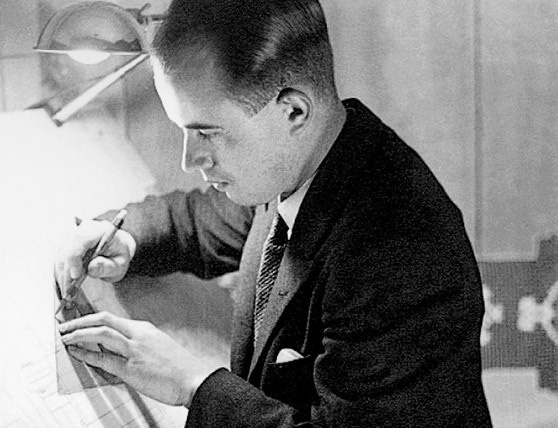
It is interesting that by 1936, under the direction of Sennheiser, a group of engineers from the Hertz Institute was developing an original reverb, which was first used to change the sound of the piano at the opening of the Olympic Games in Berlin. According to reviews of those who heard the instrument, a modified grand piano with Sennheiser reverb allowed to achieve the effect, which today is called Large or big Hall (imitating the sound of an instrument in a large cathedral), while the sound resembled an organ.

Having completed work on the “Olympic” reverb and other projects, he holds the position of chief engineer at the Hertz Institute in Hanover, and a little later (in 1938), on his initiative, the Institute of Radio Frequency Engineering and Electroacoustics was created. The scientist will remain in the post of director of this research institute until May 1945. In 1940, Fritz Sennheiser defended his doctoral (in the Bologna system - analogue of the Ph.D.) thesis. Due to the bombing of 1943, the building of the scientific institution in Hanover became unsuitable for further research, after which the Sennheiser group moved to another room in Venebostel, where the Sennheiser laboratory was based until the end of the hostilities.


Hanover after the bombing in 1943.
A number of sources mention that Fritz Sennheiser (and scientists at his institute) “was responsible for sending encoded messages to the Nazi army during World War II,” which is not entirely true. The coding system, which was handled by a group of scientists at his institute, was not completed and was never used. After the victory of the Allies, the work was curtailed, and for some reason they fell under a strict ban, as the scientist himself noted, under pain of death.
To the credit of Zennheiser, he was not a member of the Nazi party, and he earned career growth and authority in the scientific community as a researcher and inventor. Largely because of this, he avoided the painful processes of denazification and was able to quickly get on his feet after the crushing fall of the Third Reich, which financed his research before and during the war.
Ironically, Victory Day over Germany is May 9th — the birthday of Fritz Sennheiser. It should be noted that Fritz was not long worried about the defeat and termination of the institute. As an experienced pragmatist, he quickly realized that engineering and scientific experience could be a source of income. Already in June 1945, a team of seven engineers under the direction of Sennheiser creates a small production company. It is symbolic that the office and production were based in one of the surviving buildings of the Hanover Technical University. At that time, the company was called Laboratorium Wennebostel (abbreviated as “Labor W”), in honor of the village into which the Sennheiser group moved after the bombing of Hanover.

Due to the fact that at that time there was a ban on the Allies' research in the field of radio electronics, the company began with the development and production of precision voltmeters commissioned by Siemens. Siemens experts appreciated the stable quality of voltmeters and in 1946 ordered a large batch of microphones from Sennheiser (the first Labor W microphone, commissioned by Siemens - DM 1).

By 1947, Sennheiser and partners managed to bring the new DM-2 microphone model to the market as an independent product, selling them simultaneously to Siemens.
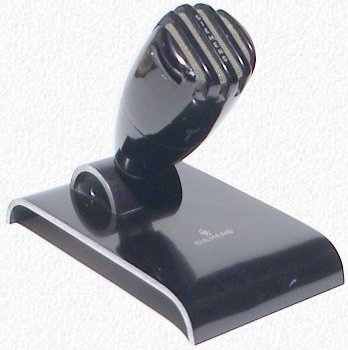
Through the efforts of Sennheiser, Labor W was growing rapidly, and by 1955 the firm had a staff of 250 employees, and the product range expanded significantly and by the end of the 50s annual sales revenues reached 9 million marks. In the mid-50s, the company produced: microphones of various designs, geophysical equipment, microphone transformers, mixing consoles, miniature dynamic headphones. The first microphone with noise reduction function (DM4 model) became a special pride of this period of the company's development.
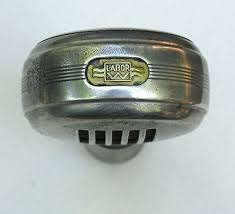

In 1958, the company changes its name, so the well-known Sennheiser electronic brand appears. During this period, Sennheiser continues to invest the lion's share of revenues in expanding production, improving the technological base, and most importantly in innovative research, in which he often participates personally. Interestingly, despite the company's vigorous activity, Professor Sennheiser continues to teach at the University of Hanover.
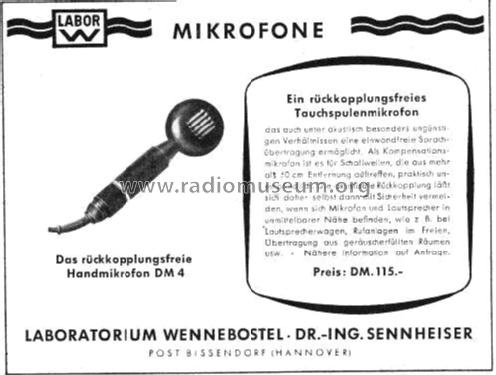
In the late 50s and early 60s, Sennheiser electronic began production of amplifiers, intercoms, and expanded the range of headphones. In 1960, one of the most popular studio microphones MD-421 was created.
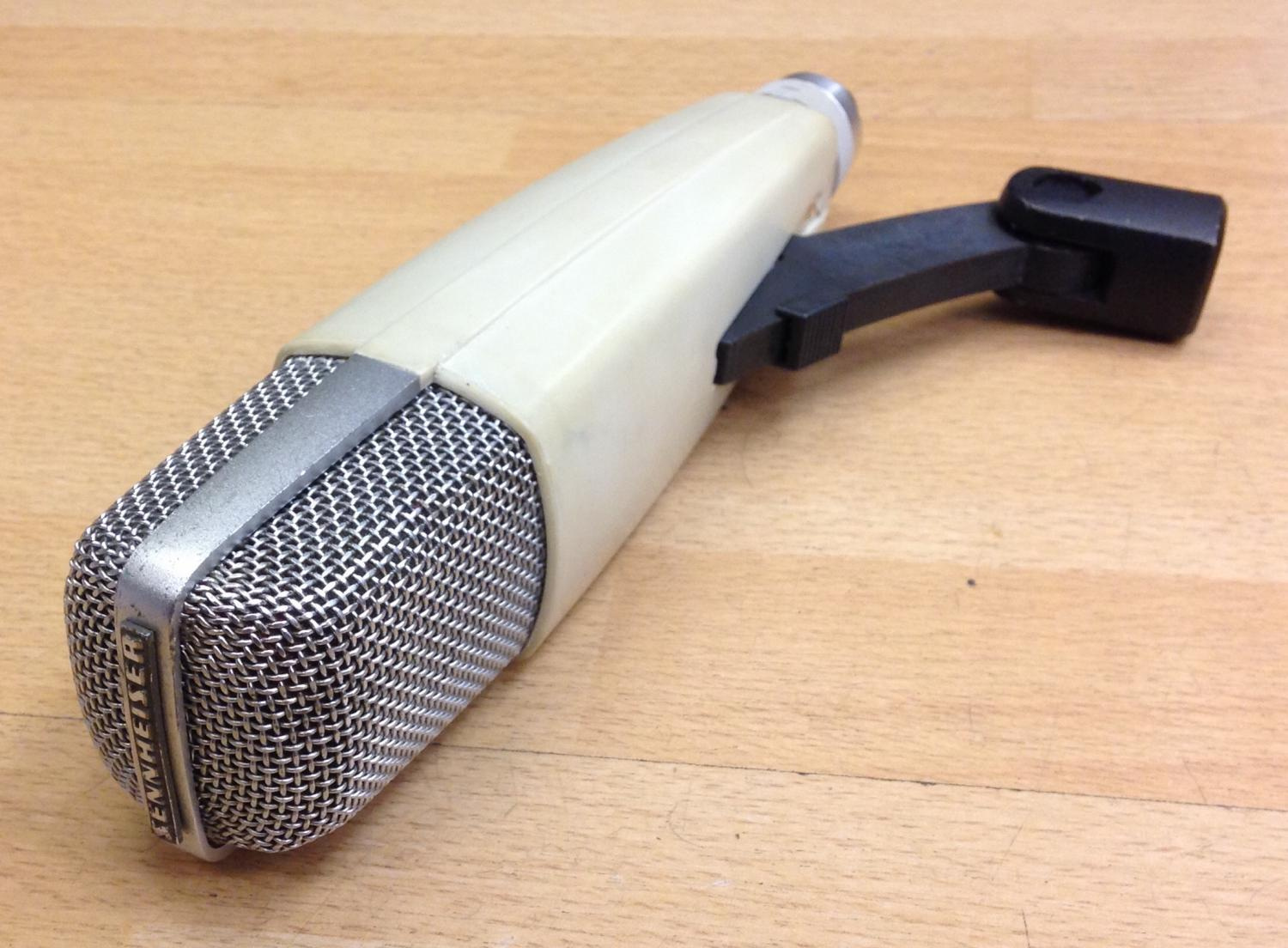
By 1962, the world's first condenser omnidirectional radio frequency microphone MKH 104 and the original stereo microphone MDS-1 appeared in the Zennheiser innovation piggy bank.
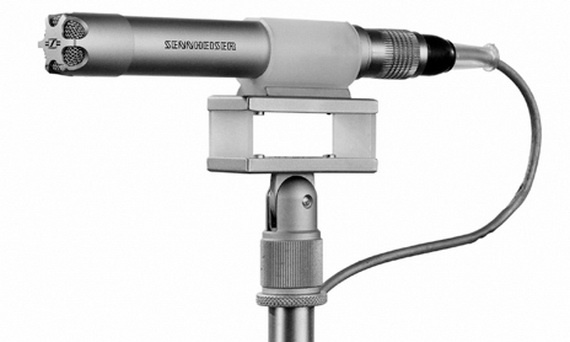
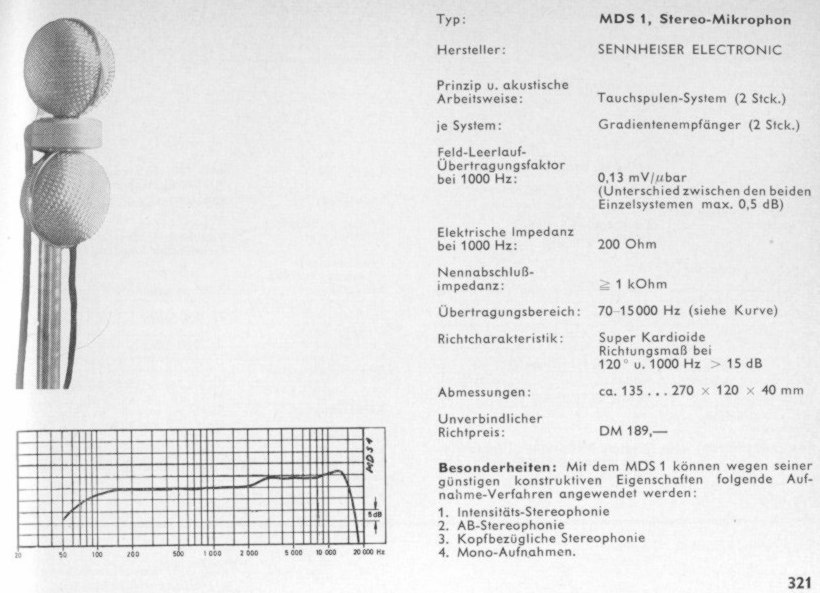
The legendary Sennheiser HD 414 headphones became the real triumph of Sennheiser and his company's engineers. These were the first headphones of the open type. Over the entire period, more than 10,000,000 pairs of this type of headphone have been sold.
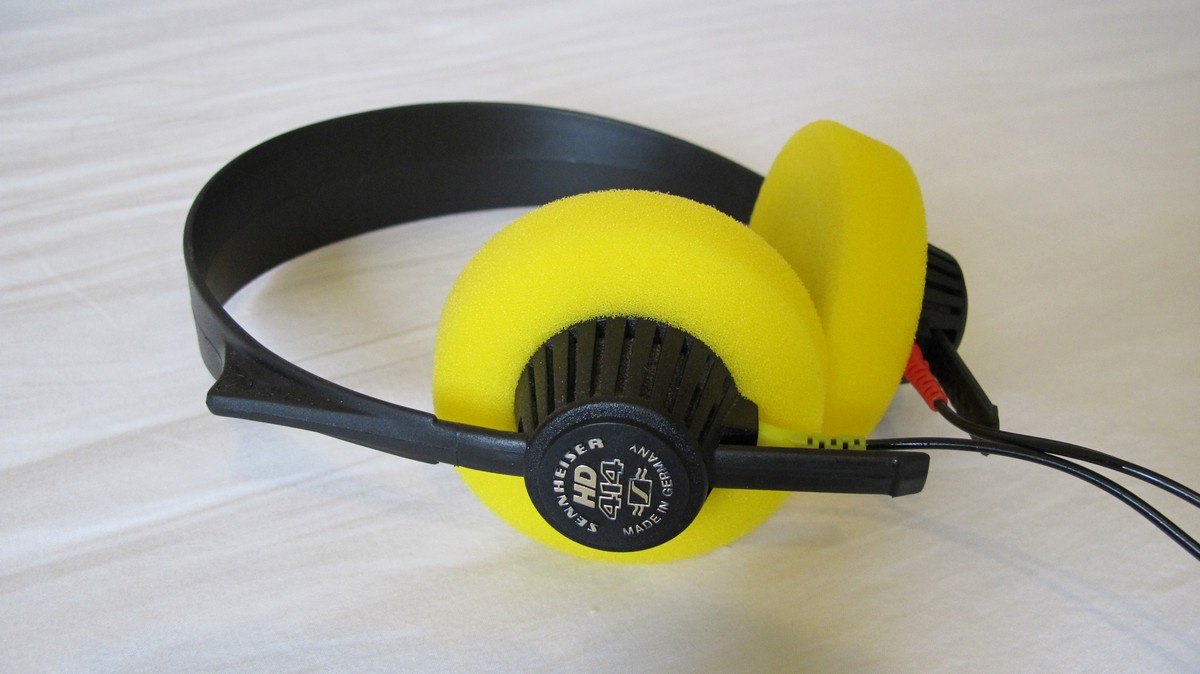
It was this model of headphones in 1973 that was adopted by NASA and used as on-board at the Skylab orbital station. At the moment, they are recognized as the only household headphones that were included in the standard equipment of the astronauts. It is believed that the majority of Sennheiser Electronic’s revenues came from HD 414. Later, SONY will acquire a license for the production of open headphones from Sennheiser and begin production of the Walkman with an open type of headphones.
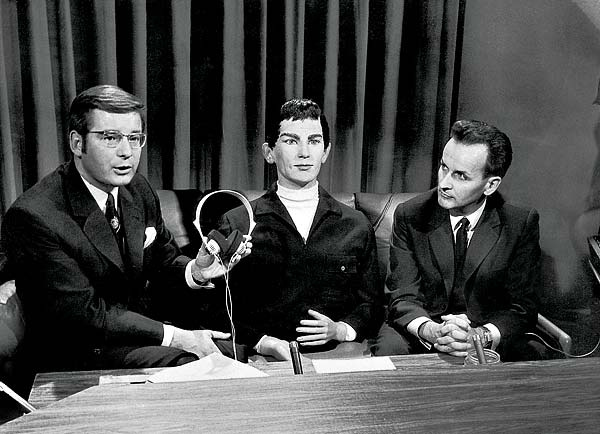
In the 70s, research laboratories created by Sennheiser contributed to the development of digital technologies, where the SI 406 transmitter and the HDI 406 stethoscope were released in 1976, with the help of which the audio signal was transmitted digitally for the first time through the infrared channel.
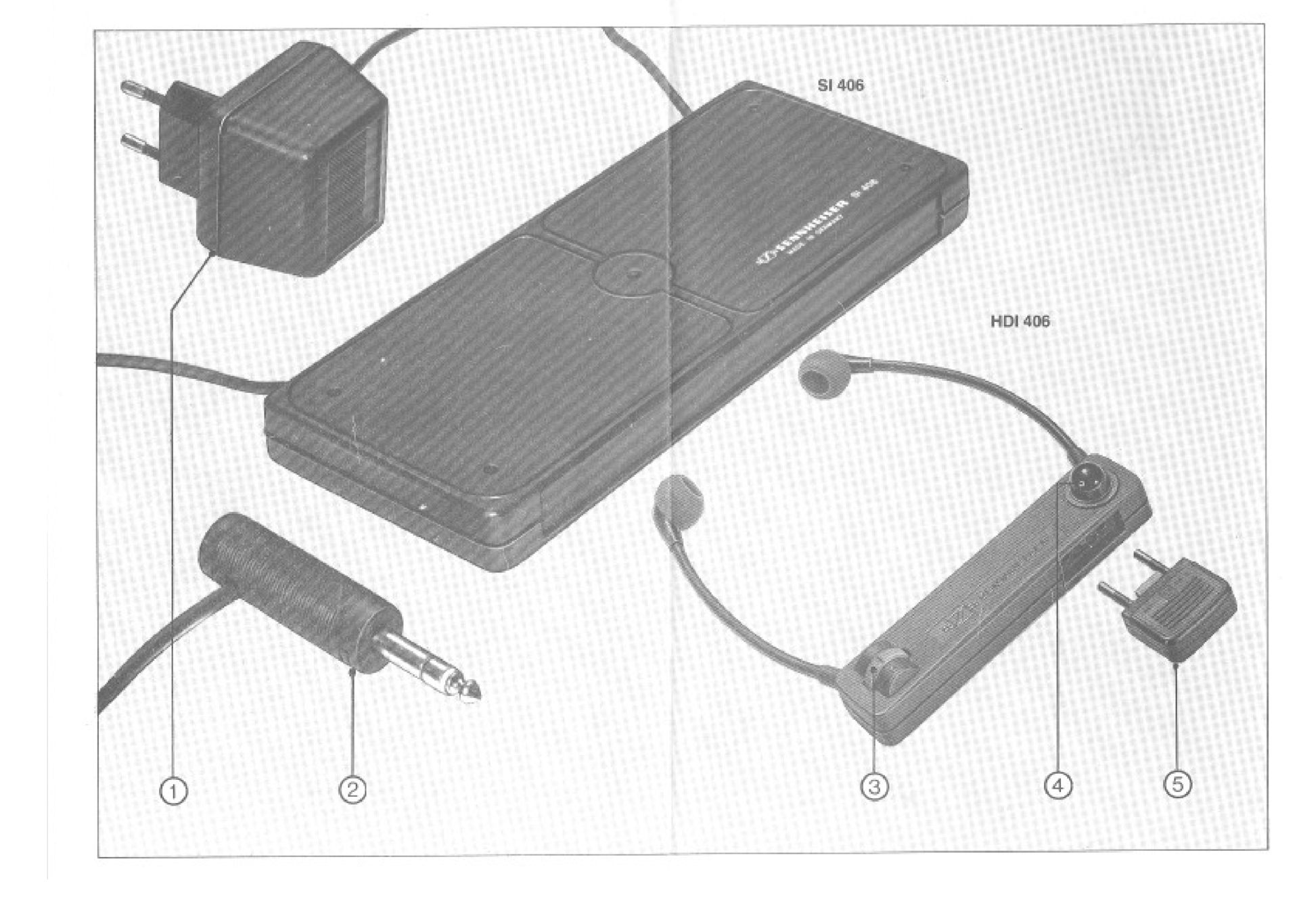
In 1980, under the direction of Sennheiser, the first wireless vocal microphone SKM 4031 was developed and produced.
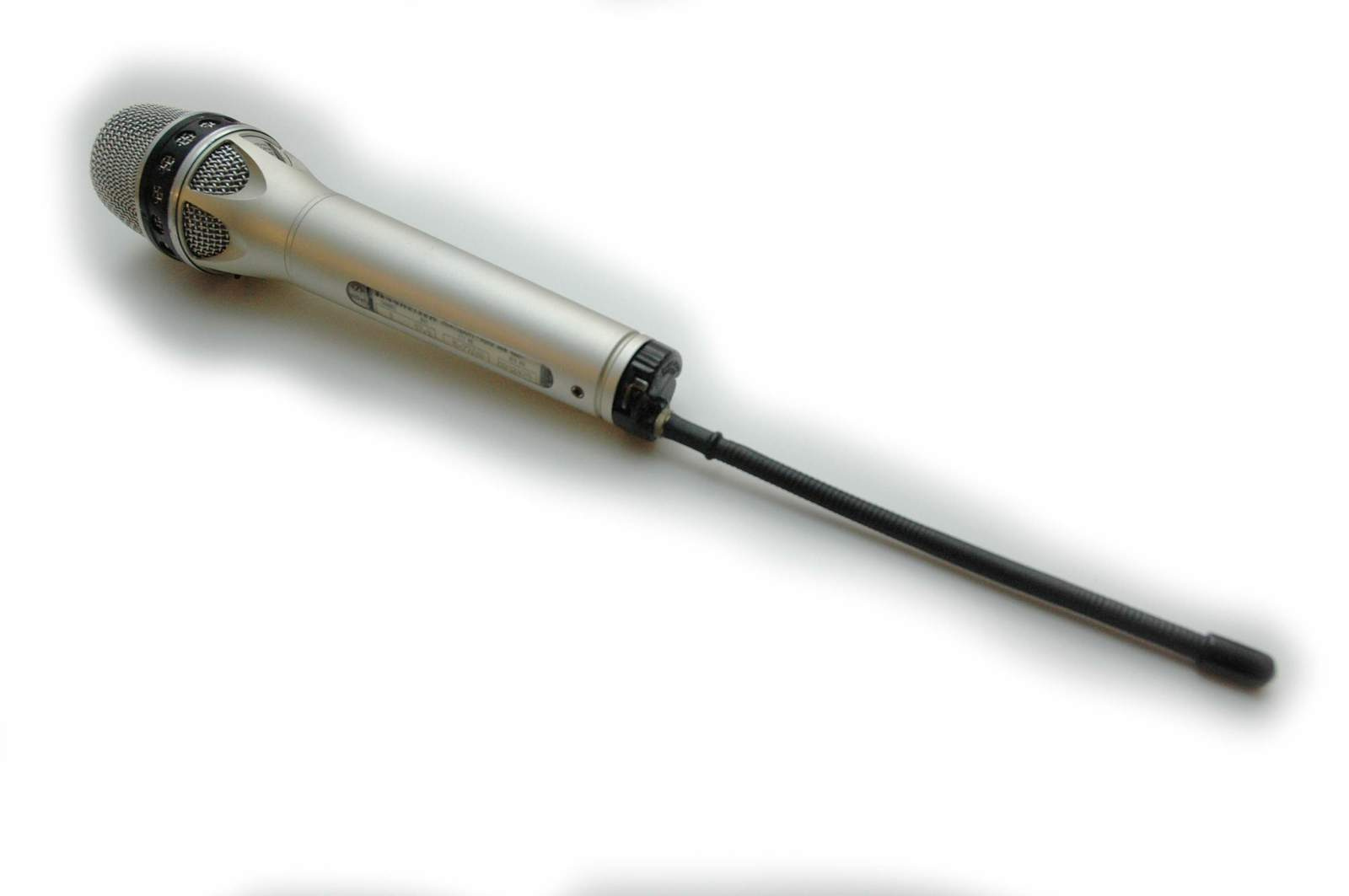
In May 9, 1982, Fritz Sennheiser turned 70 years old, on that day he decided to hand over the reins to his son Jörg. Leaving his post, a successful scientist, engineer and entrepreneur, not without regret, said:
The inventor's heart stopped beating on May 17, 2010, Fritz Sennheiser died at the age of 98 in Wedemark. For his long and fruitful life, the scientist received awards from the Academy of Motion Picture Arts and Sciences (in 1987 “Scientific and Engineering Award”) for the development of the MKH 816 microphone gun, the Society of Sound Engineers award in 1976, and also an honorary membership with the highest distinction - the AES Gold medal Medal

The scientist was an honorary professor at the University of Hanover, honorary chairman of the "Association of German Manufacturers of Electrical Products and Electronics", was awarded the Karl Karmarsch Medal of the Hanover Higher School and the University of Hanover. Leibniz, Rudolf Diesel Medal of the German Institute of Inventions. It is also known that Fritz Sennheiser rejected the Order of Merit to the Federal Republic of Germany three times.
The following sources of information and graphic content were used to create the material: The New York Times, www.sennheiser.de , Wikipedia, www.peoples.ru
www.auduomuseum.org , www.proaudio.md , pult.ru, hightechhistory.wordpress. com, irvispress.ru

The interesting life of engineer and scientist Fritz Sennheiser was not always easy. Looking a little ahead, I note that the creation of the company by chance was predetermined by the defeat of Germany in World War II. The ingenuity and fecundity of the engineer laid the foundation for long and successful work. Today, the company he created produces world-famous headphones, microphones, communication systems, radio systems, aircraft equipment and much more.
The following facts speak about the influence of the company created by Fritz Zennheiser on the global audio market: more than 100 types of products, average annual sales revenue of about 400,000,000 Euros, 2,100 employees, every tenth headphone, and every 15th microphone in the world released by this company .
Beginning of the journey - the landscape designer goes to electronics
Fritz Sennheiser was born on May 9, 1912 in Berlin. Where he spent almost all his childhood and adolescence. Sennheiser attended the Karlhorst County Grammar School, which he successfully completed in 1932. Interest in electronics for the future inventor appeared in his school years.
In an interview, Sennheiser said:
“As an eleven-year-old boy, I witnessed the beginning of the era of radio. (at this age - author's note) I created my own receiver from the simplest components: a coil, a tungsten rod, quartz and a 20-meter radio antenna ”
Despite the successful amateur radio experience, Fritz did not dream of a career as an engineer or inventor. The real passion of the young Sennheiser was landscape design. However, the harsh reality has made adjustments to the life of the young man.
The world financial crisis of 1929 changed Fritz's views on the future, the plight of Germany in the early 30s deprived landscape design of commercial and career attractiveness. And instead of his favorite business, Fritz, assuming the demand for the profession of an engineer, enters Berlin Technical University.
After graduating from university, Sennheiser takes a job in the real “Mecca” of European telecommunications research at the Hertz Institute, where he writes his first dissertation under the supervision of Dr. Oscar Wierling.

The father of the Olympic Rever and the “main” radio cryptograph of the Third Reich
It is interesting that by 1936, under the direction of Sennheiser, a group of engineers from the Hertz Institute was developing an original reverb, which was first used to change the sound of the piano at the opening of the Olympic Games in Berlin. According to reviews of those who heard the instrument, a modified grand piano with Sennheiser reverb allowed to achieve the effect, which today is called Large or big Hall (imitating the sound of an instrument in a large cathedral), while the sound resembled an organ.

Having completed work on the “Olympic” reverb and other projects, he holds the position of chief engineer at the Hertz Institute in Hanover, and a little later (in 1938), on his initiative, the Institute of Radio Frequency Engineering and Electroacoustics was created. The scientist will remain in the post of director of this research institute until May 1945. In 1940, Fritz Sennheiser defended his doctoral (in the Bologna system - analogue of the Ph.D.) thesis. Due to the bombing of 1943, the building of the scientific institution in Hanover became unsuitable for further research, after which the Sennheiser group moved to another room in Venebostel, where the Sennheiser laboratory was based until the end of the hostilities.


Hanover after the bombing in 1943.
A number of sources mention that Fritz Sennheiser (and scientists at his institute) “was responsible for sending encoded messages to the Nazi army during World War II,” which is not entirely true. The coding system, which was handled by a group of scientists at his institute, was not completed and was never used. After the victory of the Allies, the work was curtailed, and for some reason they fell under a strict ban, as the scientist himself noted, under pain of death.
To the credit of Zennheiser, he was not a member of the Nazi party, and he earned career growth and authority in the scientific community as a researcher and inventor. Largely because of this, he avoided the painful processes of denazification and was able to quickly get on his feet after the crushing fall of the Third Reich, which financed his research before and during the war.
From defeat to victory - Sennheiser time
Ironically, Victory Day over Germany is May 9th — the birthday of Fritz Sennheiser. It should be noted that Fritz was not long worried about the defeat and termination of the institute. As an experienced pragmatist, he quickly realized that engineering and scientific experience could be a source of income. Already in June 1945, a team of seven engineers under the direction of Sennheiser creates a small production company. It is symbolic that the office and production were based in one of the surviving buildings of the Hanover Technical University. At that time, the company was called Laboratorium Wennebostel (abbreviated as “Labor W”), in honor of the village into which the Sennheiser group moved after the bombing of Hanover.

Due to the fact that at that time there was a ban on the Allies' research in the field of radio electronics, the company began with the development and production of precision voltmeters commissioned by Siemens. Siemens experts appreciated the stable quality of voltmeters and in 1946 ordered a large batch of microphones from Sennheiser (the first Labor W microphone, commissioned by Siemens - DM 1).

By 1947, Sennheiser and partners managed to bring the new DM-2 microphone model to the market as an independent product, selling them simultaneously to Siemens.
Through the efforts of Sennheiser, Labor W was growing rapidly, and by 1955 the firm had a staff of 250 employees, and the product range expanded significantly and by the end of the 50s annual sales revenues reached 9 million marks. In the mid-50s, the company produced: microphones of various designs, geophysical equipment, microphone transformers, mixing consoles, miniature dynamic headphones. The first microphone with noise reduction function (DM4 model) became a special pride of this period of the company's development.


In 1958, the company changes its name, so the well-known Sennheiser electronic brand appears. During this period, Sennheiser continues to invest the lion's share of revenues in expanding production, improving the technological base, and most importantly in innovative research, in which he often participates personally. Interestingly, despite the company's vigorous activity, Professor Sennheiser continues to teach at the University of Hanover.

In the late 50s and early 60s, Sennheiser electronic began production of amplifiers, intercoms, and expanded the range of headphones. In 1960, one of the most popular studio microphones MD-421 was created.

By 1962, the world's first condenser omnidirectional radio frequency microphone MKH 104 and the original stereo microphone MDS-1 appeared in the Zennheiser innovation piggy bank.


The legendary Sennheiser HD 414 headphones became the real triumph of Sennheiser and his company's engineers. These were the first headphones of the open type. Over the entire period, more than 10,000,000 pairs of this type of headphone have been sold.

It was this model of headphones in 1973 that was adopted by NASA and used as on-board at the Skylab orbital station. At the moment, they are recognized as the only household headphones that were included in the standard equipment of the astronauts. It is believed that the majority of Sennheiser Electronic’s revenues came from HD 414. Later, SONY will acquire a license for the production of open headphones from Sennheiser and begin production of the Walkman with an open type of headphones.

In the 70s, research laboratories created by Sennheiser contributed to the development of digital technologies, where the SI 406 transmitter and the HDI 406 stethoscope were released in 1976, with the help of which the audio signal was transmitted digitally for the first time through the infrared channel.

In 1980, under the direction of Sennheiser, the first wireless vocal microphone SKM 4031 was developed and produced.

Honorable old age and world recognition
In May 9, 1982, Fritz Sennheiser turned 70 years old, on that day he decided to hand over the reins to his son Jörg. Leaving his post, a successful scientist, engineer and entrepreneur, not without regret, said:
“I prepared for retirement, although I must admit that I would be happy if I continued, simply because I liked it, and, of course, because we have always been successful. In the end, it took me two and a half years to get used to the fact that I can no longer make decisions. ”
The inventor's heart stopped beating on May 17, 2010, Fritz Sennheiser died at the age of 98 in Wedemark. For his long and fruitful life, the scientist received awards from the Academy of Motion Picture Arts and Sciences (in 1987 “Scientific and Engineering Award”) for the development of the MKH 816 microphone gun, the Society of Sound Engineers award in 1976, and also an honorary membership with the highest distinction - the AES Gold medal Medal

The scientist was an honorary professor at the University of Hanover, honorary chairman of the "Association of German Manufacturers of Electrical Products and Electronics", was awarded the Karl Karmarsch Medal of the Hanover Higher School and the University of Hanover. Leibniz, Rudolf Diesel Medal of the German Institute of Inventions. It is also known that Fritz Sennheiser rejected the Order of Merit to the Federal Republic of Germany three times.
The following sources of information and graphic content were used to create the material: The New York Times, www.sennheiser.de , Wikipedia, www.peoples.ru
www.auduomuseum.org , www.proaudio.md , pult.ru, hightechhistory.wordpress. com, irvispress.ru
